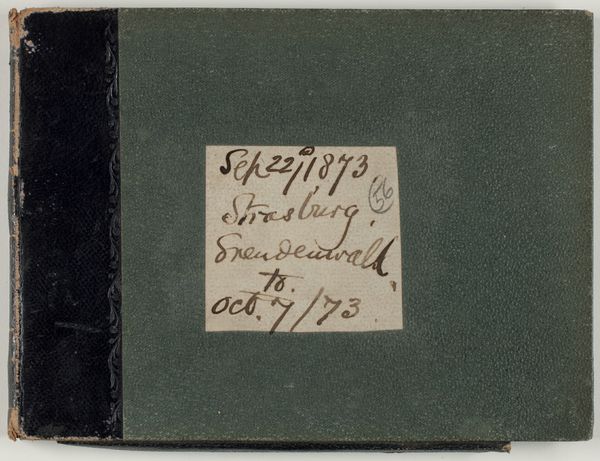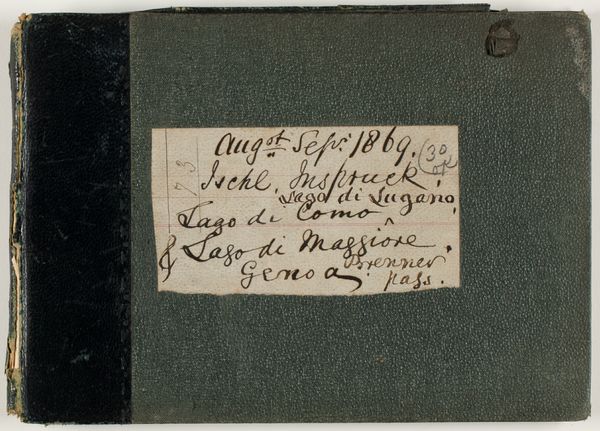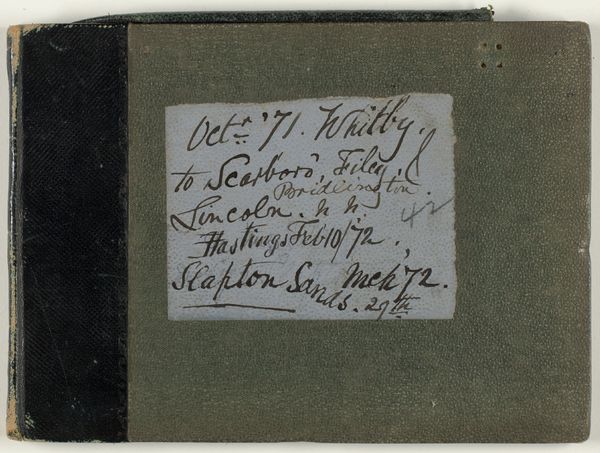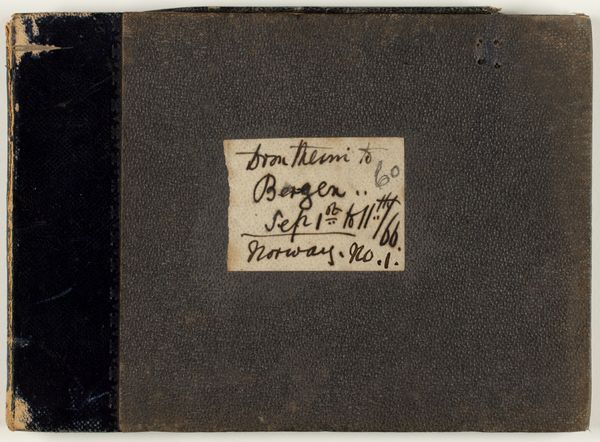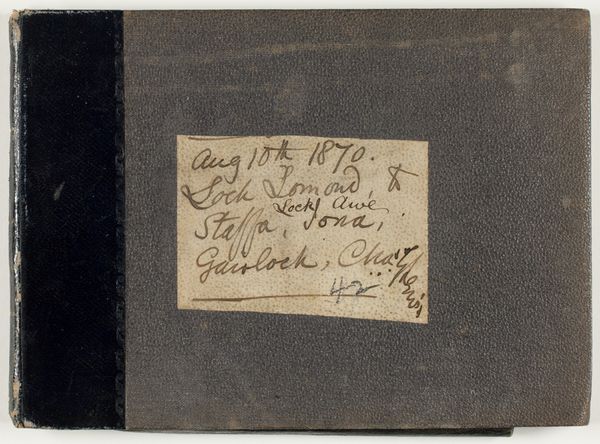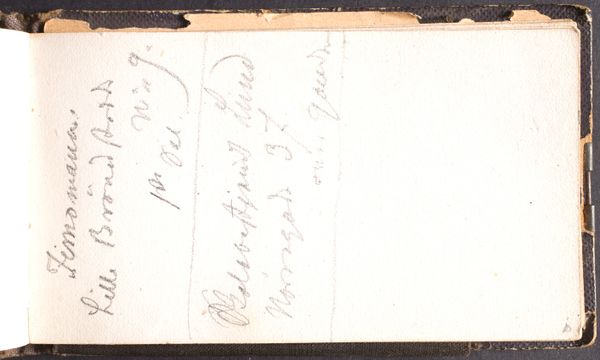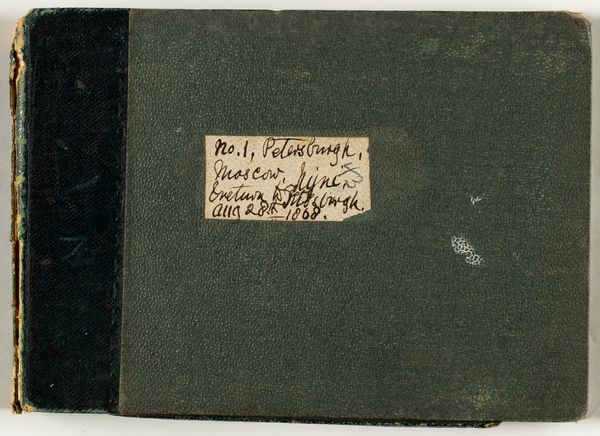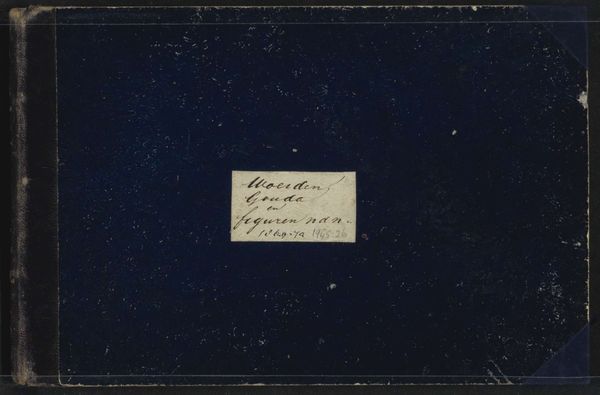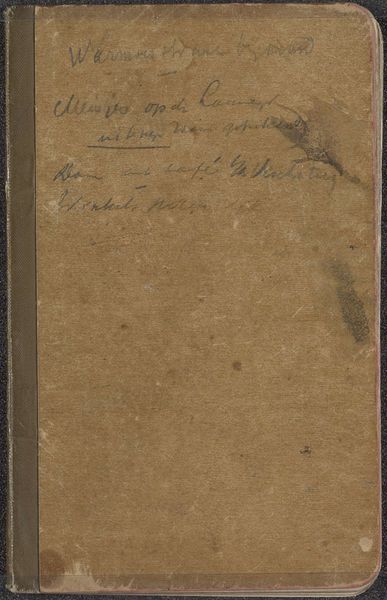
drawing, coloured-pencil, print, paper, pencil, graphite
#
drawing
#
coloured-pencil
# print
#
paper
#
personal sketchbook
#
coloured pencil
#
england
#
pencil
#
graphite
#
northern-renaissance
Copyright: Public Domain
Curator: We are looking at “Cornwall,” created between 1868 and 1869 by Charles George Lewis. It resides here at The Art Institute of Chicago. At first glance, it appears to be a personal sketchbook. Editor: There's a stark contrast in the muted grays and blacks. The script on the front seems almost like a label, pinning down a memory. The texture, you can almost feel the worn leather. Curator: The placement of handwritten annotations becomes crucial. "Cornwall, April '68," it says, among other locations and dates. These act like anchors, linking specific places to moments in time, suggesting travel and documentation were important aspects of Lewis's practice. He wasn’t just recording scenery, he was seemingly logging his own history. Editor: The dates and locations could represent pilgrimage or even seeking a personal holy land of inspiration through observation. Each place could signify not just geography but also emotion and intellectual milestones. Was he seeking artistic validation outside London's art scene? Curator: The materials, the humble pencil and paper, speaks to accessibility and directness. They serve as immediate conduits to capture the transient qualities of nature and lived experience. This points to broader shifts in Victorian society and leisure culture, and the democratization of art-making and exploration. How did the culture surrounding the northern-renaissance aesthetic play into this? Editor: Yes, while drawing upon a Renaissance sensibility, Lewis imbues his sketches with the emotion and the quest for symbolism over mere topographical accuracy. Think about other works featuring Saint George or images of Britannia. It suggests deeper concepts of identity. Curator: Looking at it from that vantage point invites reflection on how artistic practices evolve amidst cultural change. I think, ultimately, such simple pieces offer an intimate lens on historical and personal evolution. Editor: Yes, a silent witness to a specific, transformative period, not just for the artist but the country itself, really.
Comments
No comments
Be the first to comment and join the conversation on the ultimate creative platform.

